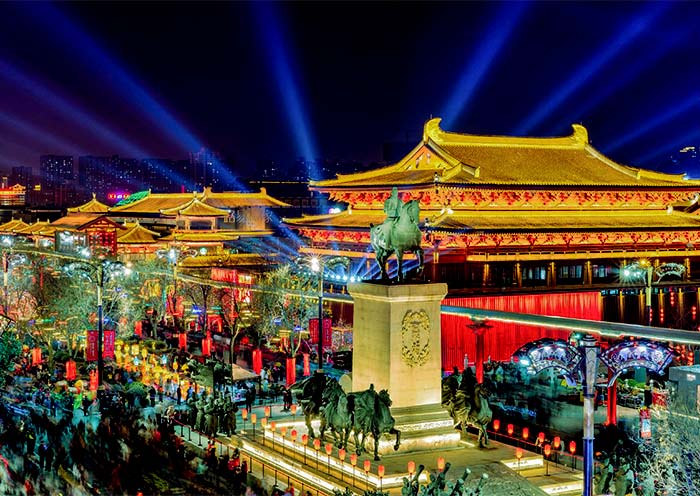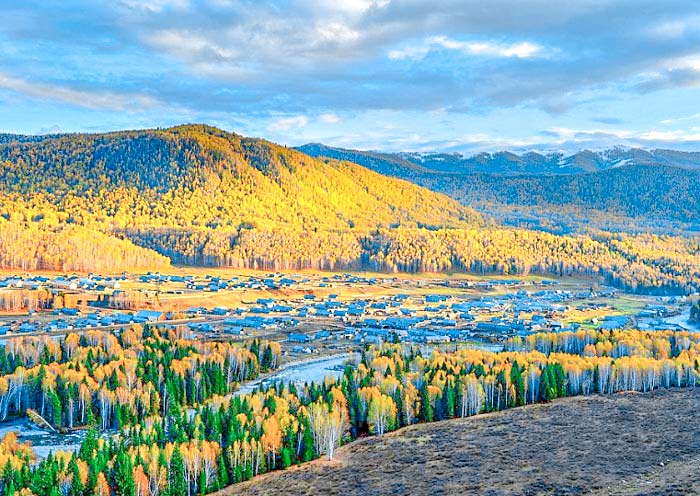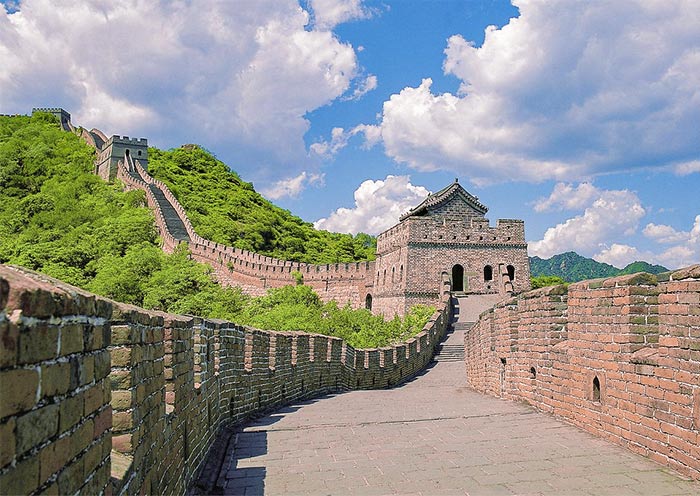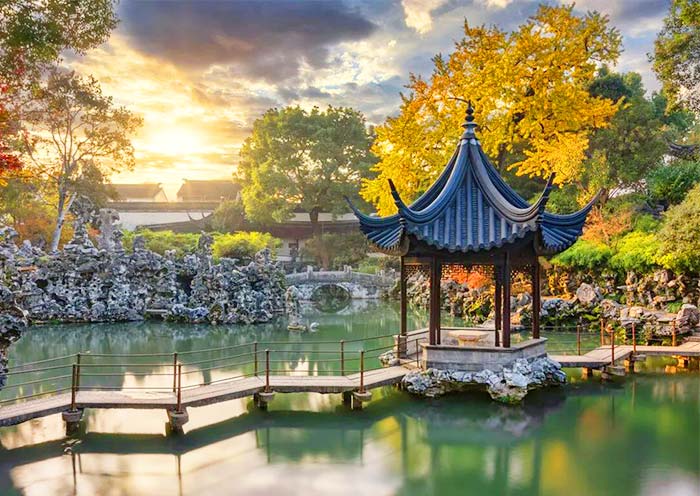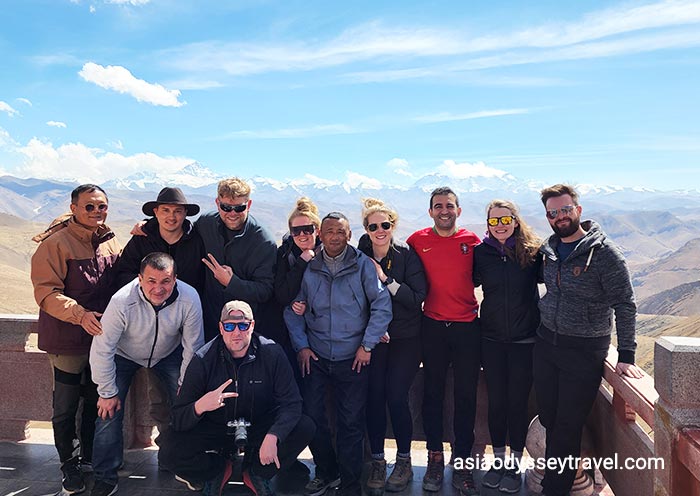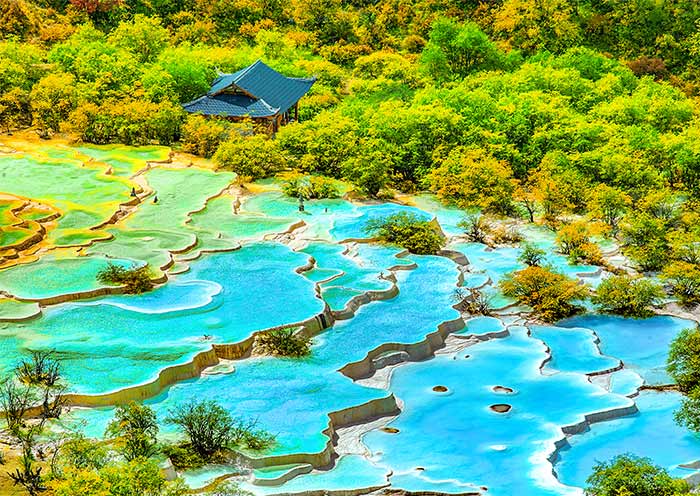No.1 Huangshan Mountain - The Mystical Peaks of the Yellow Emperor
- Chinese Name: Huáng Shān (黄山)
- Location: Southern part of Anhui Province in Eastern China.
- Elevation: The highest peak, Lotus Peak (Lian Hua Feng), rises to 1,864 meters (6,115 feet).
- Best Travel Time: Spring (April to June) and Autumn (September to November) offer the most comfortable weather and picturesque scenery.
- Tickets: The entrance ticket costs 190 RMB. Additionally, there are four cable car lines available, with each segment priced at 80 to 100 RMB for a one-way trip.
- Recommended Visiting Time: 2 to 3 days are typically recommended to fully explore the main peaks, enjoy the sunrise, and hike the various routes without a rush.
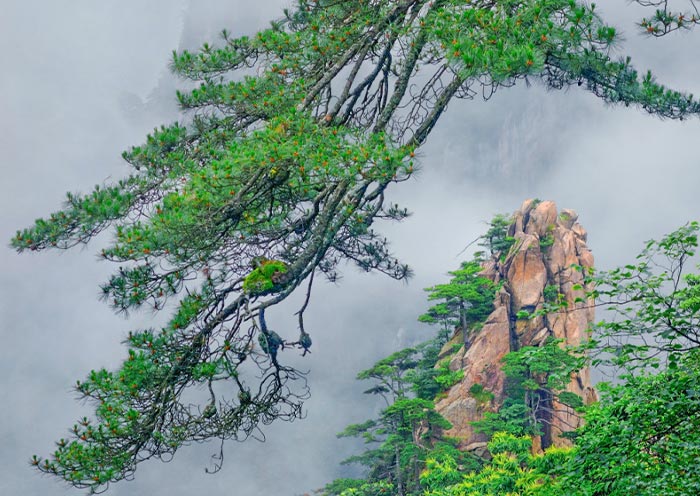
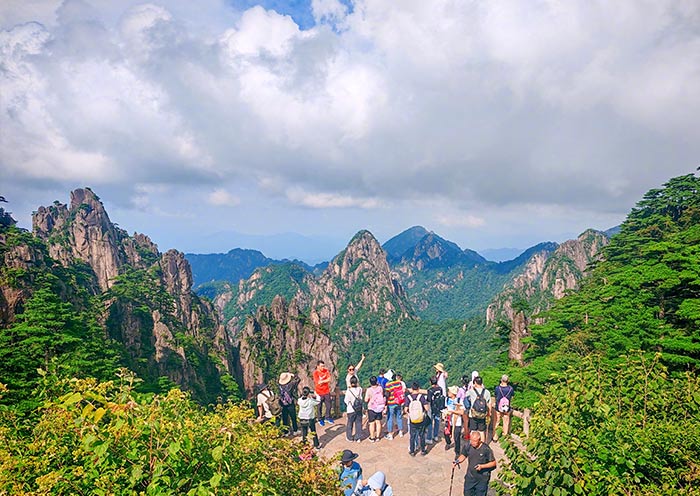
Huangshan Mountain, known as the 'Yellow Mountain', is a UNESCO World Heritage site famed for its stunning natural beauty. It's about 300 kilometers from Hangzhou and around 500 kilometers from Shanghai, making it an accessible escape into nature for those in the bustling cities.
The mountain is revered for its nature wonders, including peculiarly shaped granite peaks, verdant pine trees that cling to the rocks, and the sea of clouds that often engulfs its summits. Visitors are drawn to Huangshan for hiking, photography, and the chance to see the sunrise and sunset that transform the scenery into a palette of vibrant colors.
Check more about How to Plan a Shanghai Huangshan Tour and How to Plan a Hangzhou Huangshan Tour>>
No.2 Mount Hua - The Precipitous Paths to Heaven's Gate
- Chinese Name: Huà Shān (华山)
- Location: Eastern part of Shaanxi Province in Central China
- Elevation: The highest peak, South Peak (南峰), reaches 2,154.9 meters (7,070 feet).
- Best Travel Time: From April to October when the weather is generally clear and pleasant.
- Tickets: The entry ticket is 160 RMB. There are two cable car routes available to visitors: one is 140 RMB and the other 80 RMB.
- Recommended Visiting Time: One day is recommended to explore the main peaks and attractions, but for those who wish to experience the mountain more thoroughly, including watching the sunrise, a two-day visit with an overnight stay is ideal.


Mount Hua, with its breathtaking cliffs and traditionally revered Taoist temples, is one of China's five great mountains, located just 120 kilometers east of Xi'an in Shaanxi Province. Known for its sheer peaks and a heady mix of thrill and spirituality, this mountain offers an unparalleled adventure for hikers and pilgrims alike. Huashan boasts the title of the world's most dangerous hike, the famous Plank Walk, which is sure to get your adrenaline pumping.
Visitors often trek to the South Peak, the mountain's highest point at 2,154.9 meters, to witness the sunrise, a truly ethereal experience. The mountain is well-connected to major cities like Xi'an, making it an accessible day trip for those looking to escape the urban hustle.
No.3 Mount Tai - The Majestic Throne of Eastern Spirituality
- Chinese Name: Tài Shān (泰山)
- Location: Western part of Shandong Province in Eastern China
- Elevation: The highest peak, Jade Emperor Peak, stands at about 1,545 meters (5,069 feet).
- Best Travel Time: From late spring to early autumn, particularly April, May, September, and October when the weather is mild and the natural scenery is at its best.
- Tickets: The entrance ticket is priced at 115 RMB. There is a cable car service available, with tickets costing 100 RMB.
- Recommended Visiting Time: A one to two-day visit is recommended. This allows time to ascend the mountain, visit historical sites, and enjoy the sunrise without rushing.
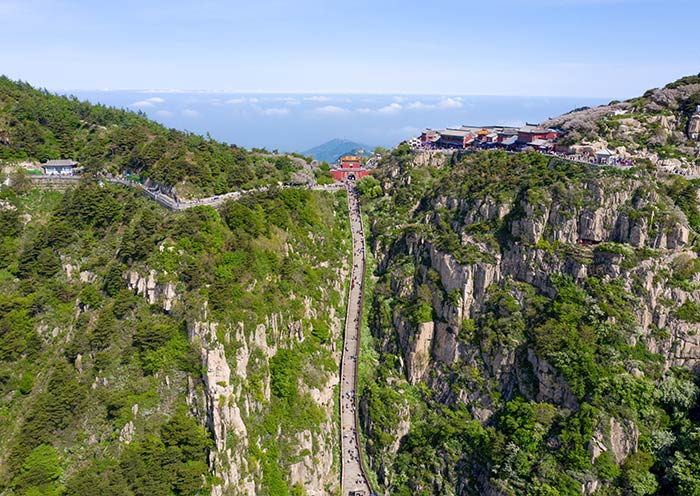
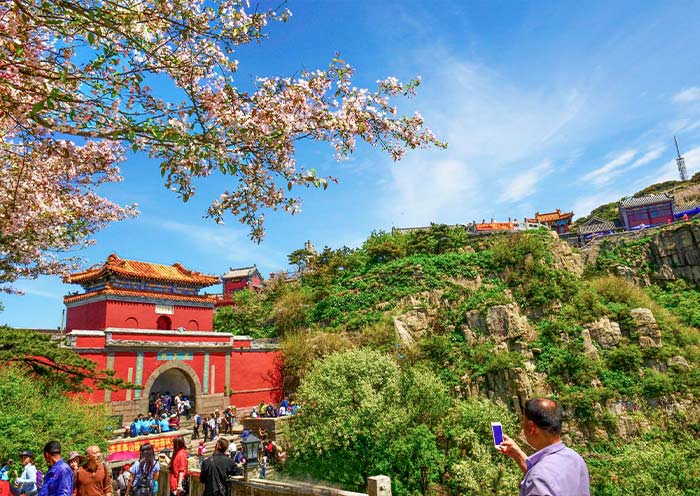
Mount Tai stands as a symbol of ancient Chinese grandeur and spiritual significance. As the easternmost of the five great mountains of China, it is a beacon of cultural and historical importance, located a mere 66 kilometers from the provincial capital of Jinan and near the city of Tai'an.
Mount Tai's majesty is not only in its height, reaching 1,545 meters at Jade Emperor Peak, but also in its rich tapestry of temples, inscriptions, and ancient trees. Its paths are steeped in history, having borne witness to centuries of imperial pilgrimages, which makes the climb a journey through time.
Visitors are drawn to the mountain for the awe-inspiring sunrise from the summit, the chance to explore Dai Temple at its base, and the serene walk through the "Heavenly Street" filled with shops and eateries. Whether you are scaling its heights for the panoramic views or to immerse yourself in its deep cultural roots, Mount Tai offers a travel experience that resonates with both the body and the soul.
No.4 Tianzi Mountain in Zhangjiajie - The Avatar-Inspired Pillars of the Sky
- Chinese Name: Tiānzǐ Shān (天子山)
- Location: Northwestern part of Hunan Province in Central China
- Elevation: The highest peak of Tianzi Mountain reaches approximately 1,260 meters (4,133 feet).
- Best Travel Time: From April to June and from September to October when the weather is comfortable and the visibility is usually good for enjoying the views.
- Tickets: For entrance to the Wulingyuan Scenic Area, which includes access to Tianzi Mountain, tickets are priced at 225 RMB. There are three cable cars and one elevator available to help visitors navigate the terrain, with prices ranging from 60 to 80 RMB.
- Recommended Visiting Time: It is recommended to spend at least one day to fully appreciate the scenic views and take in the natural beauty.

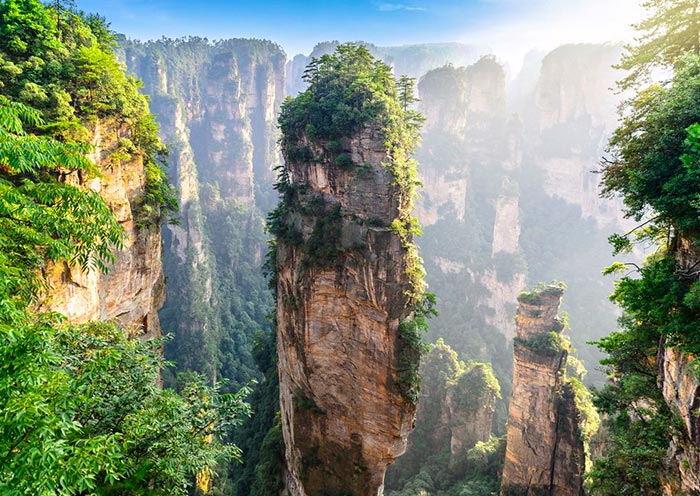
Tianzi Mountain is the crown jewel of Wulingyuan Scenic Area in Zhangjiajie. Renowned for its otherworldly natural scenery, it boasts towering karst pinnacles, often enveloped in mist, which have inspired the breathtaking floating mountains in the movie "Avatar."
Perched at an elevation of 1,260 meters (4,133 feet), Tianzi Mountain offers panoramic vistas of the surrounding peaks and valleys, particularly enchanting when the area is shrouded in mist, creating an ethereal atmosphere that draws photographers and nature enthusiasts alike.
Visitors can indulge in the scenic cable car ride, which provides a stunning aerial view of the landscape, or explore the numerous walking trails that meander through this majestic terrain.
17 Natural Wonders in China Chosen by Travelers
No.5 Wuyishan Mountain - The Enchanted Realm of the Nine-Bend River
- Chinese Name: Wǔyí Shān (武夷山)
- Location: Northwestern part of Fujian Province in southeastern China.
- Elevation: The highest peak of Wuyishan is approximately 2,158 meters (7,080 feet) above sea level, but the scenic area is known for its lower peaks too.
- Best Travel Time: From April to October, with the late spring and early autumn offering the most pleasant weather for outdoor activities.
- Tickets: The entrance ticket to the scenic area is priced at 140 RMB. Nine Bend River (九曲溪) bamboo rafting is priced at 130 RMB
- Recommended Visiting Time: It is generally recommended to spend at least 2-3 days visiting Wuyishan to fully enjoy the range of activities and sights.


Wuyishan Mountain is a majestic tapestry of lush greenery and serpentine rivers, beckoning travelers with its UNESCO-recognized splendor. This natural paradise, known for its biodiversity and rich tea culture, offers an escape to one of China's most scenic landscapes.
A mere few hours by high-speed train from major cities such as Xiamen and Fuzhou, Wuyishan is an accessible haven for nature lovers and culture enthusiasts alike.
Visitors can immerse themselves in the essence of Wuyishan through bamboo rafting on the Nine Bend River (九曲溪), a journey flanked by dramatic gorges. Hiking trails lead to ancient cliffside temples, while tea plantations offer a taste of the famed Da Hong Pao tea.
Check more about Xiamen to Wuyishan Train>>
No.6 Mount Emei - The Sacred Wonderland of Buddhism
- Chinese Name: Éméi Shān (峨眉山)
- Location: Southeastern part of Sichuan Province in southwestern China.
- Elevation: The mountain's highest peak, Wanfo Top, stands at 3,099 meters (10,167 feet) above sea level.
- Best Travel Time: From April to October when the weather is mild and the natural scenery is at its most vibrant.
- Tickets: The entry to Mount Emei costs 160 RMB, with additional charges for transportation at 50 RMB and the cableway priced at 120 RMB.
- Recommended Visiting Time: To fully experience Mount Emei, a visit of 2 days is recommended.
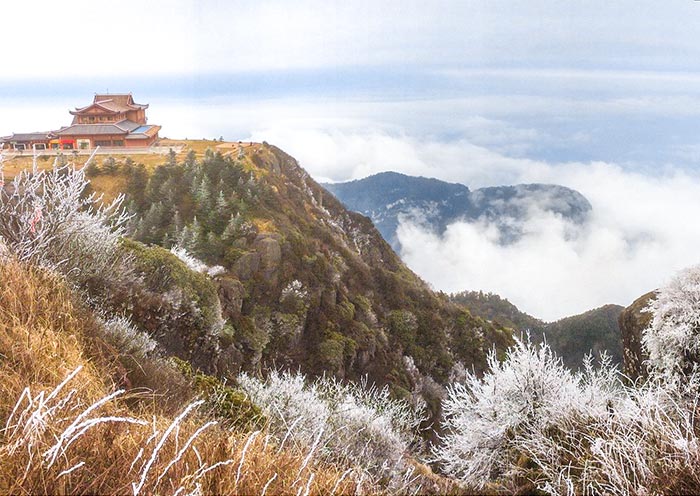
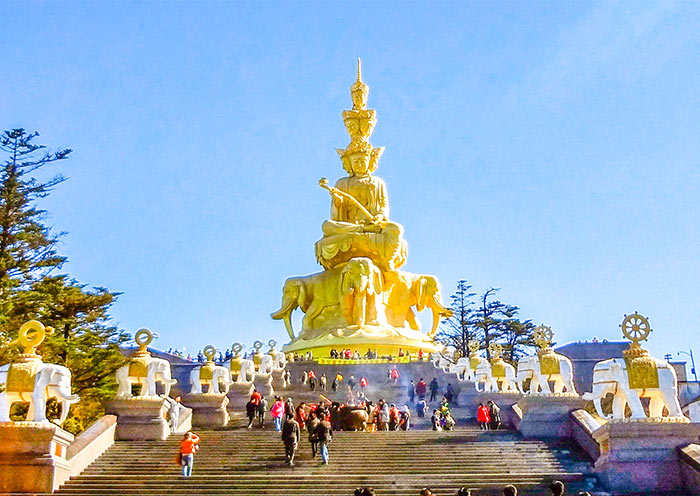
Mount Emei stands as a beacon of serenity and spiritual majesty in China's Sichuan Province. Rising to a lofty 3,099 meters, this sacred mountain lures visitors with its blend of breathtaking natural beauty and profound Buddhist culture. It is easily accessible from major cities like Chengdu, which is roughly 160 kilometers away, making it a perfect retreat for both the soul-searching pilgrim and the nature-loving explorer.
Travelers can immerse themselves in the mountain's splendors by hiking to its summit, visiting the ornate Baoguo Temple, or witnessing the iconic golden sunrise from the Golden Summit (金顶). The presence of playful macaques, the aroma of wild azaleas, and the sight of the colossal Samantabhadra statue are just a few of the reasons Mount Emei is not just a destination, but a transformative experience.
No.7 Mount Everest - Tallest Mountain in the World
- Chinese Name: 珠穆朗玛峰 (Zhūmùlǎngmǎ Fēng)
- Location: Mount Everest straddles the border between the Tibet Autonomous Region of China and Nepal.
- Elevation: The summit of Mount Everest reaches 8,848 meters (29,029 feet), while the base camp used for viewing the mountain on the Tibet side is located at an elevation of 5,200 meters (17,060 feet).
- Best Travel Time: From April to June and September to November, when the weather is generally clearer and more stable, providing better conditions for trekking and viewing the mountain.
- Tickets: Entry to the Everest Base Camp costs 160 RMB, and there is a fee of 120 RMB for the sightseeing vehicle.
- Recommended Visiting Time: A round trip from Lhasa to view Mount Everest typically takes about 4 days, allowing for travel to the base camp and time to take in the spectacular views of the world's highest peak.

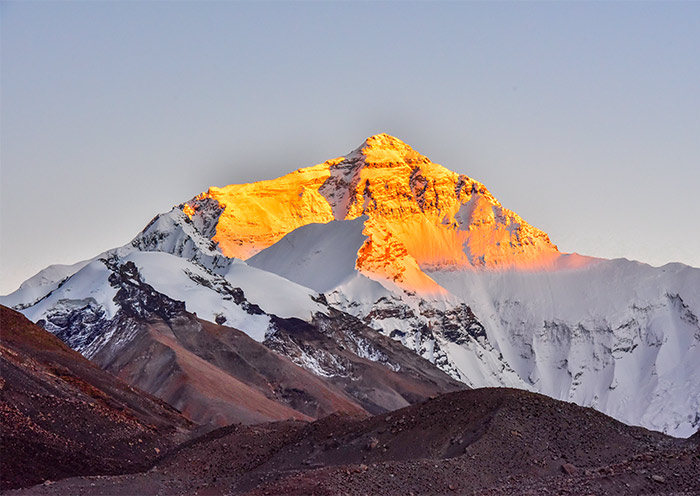
Mount Everest reigns as Earth's highest pinnacle, soaring to the sky-piercing height of 8,848 meters. Within the Tibet, the Everest Base Camp perches at 5,200 meters - a vantage point offering awe-inspiring views of the colossal mountain.
Located a significant distance from bustling metropolises, the base camp is most commonly approached from Lhasa, with the journey spanning approximately 4 days round trip. This adventure promises a blend of cultural immersion and natural splendor, traveling through the rugged Tibetan plateau.
The best moments include watching the sunrise or sunset drape the snow-laden summit in hues of gold and crimson. Whether it's for the challenge or the sheer wonder, Everest remains an emblem of nature's grandeur, offering a journey unlike any other.
Check more about How to plan an EBC tour in Tibet>>?
No.8 Jade Dragon Snow Mountain - The Shimmering Scales of the Jade Dragon
- Chinese Name: Yùlóng Xuě Shān (玉龙雪山)
- Location: Southwestern part of Yunnan Province in the southern part of China.
- Elevation: The highest peak, Shanzidou, has an elevation of 5,596 meters (18,360 feet).
- Best Travel Time: The optimal time to visit is from November to April when the weather is clear and the mountain is often covered in snow, presenting a majestic view.
- Tickets: The entrance fee to Jade Dragon Snow Mountain is set at 100 RMB. There are three cable cars within the scenic area, with prices at 60, 65, and 140 RMB, respectively, offering access to different altitudes and views.
- Recommended Visiting Time: A full day is recommended to explore the mountain's scenic areas and take in the natural beauty.
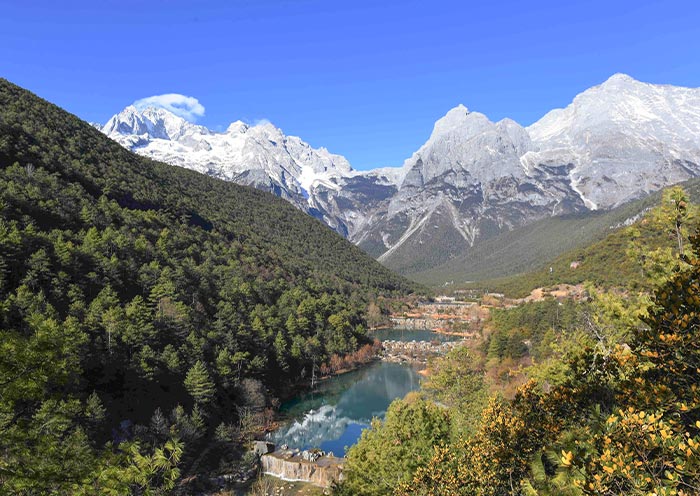

Jade Dragon Snow Mountain, or Yulong Snow Mountain, towers majestically over China's Yunnan Province, offering an enchanting blend of snow-capped peaks and rich cultural heritage. This magnificent mountain, a sanctuary of biodiversity and ethereal beauty, is just 15 kilometers from the ancient town of Lijiang, a UNESCO World Heritage site.
Visitors are drawn to this natural wonder for its thirteen peaks, resembling a dragon dancing through the clouds, with the highest, Shanzidou, reaching 5,596 meters. The mountain's proximity to Lijiang makes it an accessible yet transformative escape into nature.
Adventurers can explore the Blue Moon Valley's stunning turquoise waters or ascend via cable car to the breathtaking glacier park. Hiking enthusiasts can traverse the Tiger Leaping Gorge, one of the deepest gorges in the world. With ethnic Naxi villages dotting the landscape, travelers also have a unique opportunity to immerse themselves in local culture. Jade Dragon Snow Mountain is not just a destination; it's an invitation to witness the harmonious coexistence of nature and culture.
No.9 Wutai Mountain - The Divine Pinnacle of the Five Plateaus
- Chinese Name: Wǔtái Shān (五台山)
- Location: Shanxi Province in Northern China
- Elevation: The mountain's highest peak, known as North Terrace, rises to 3,058 meters (10,033 feet).
- Best Travel Time: From May to August when the weather is pleasant and the scenery is at its most vibrant.
- Tickets: Entrance fee is 135 RMB
- Recommended Visiting Time: 1-2 Days


Wutai Mountain is one of the four sacred mountains in Chinese Buddhism, and the abode of Manjushri, the Bodhisattva of Wisdom. Its name, meaning 'Five Terrace Mountain', is a nod to its five flat peaks, each a home to a collection of ancient Buddhist temples that have stood for centuries, making it a UNESCO World Heritage Site and an important pilgrimage destination.
Situated about 240 kilometers from Taiyuan, the provincial capital, Wutai Mountain is readily accessible for a spiritual retreat or a nature-filled adventure. Visitors come for the serene atmosphere, the intricate architecture of the monasteries, and the mountain's lush scenery.
Travelers can immerse themselves in the tranquility of the temples, participate in cultural rituals, and hike along scenic trails that offer panoramic views. Whether seeking enlightenment or adventure, Wutai Mountain promises an unforgettable journey.
No.10 Wudang Mountain - The Tranquil Home of Taoism and Martial Arts
- Chinese Name: Wǔdāng Shān (武当山)
- Location: Located in the northwestern part of Hubei Province, China.
- Elevation: The highest peak, Tianzhu Peak, reaches an elevation of about 1,612 meters (5,289 feet).
- Best Travel Time: The ideal time to visit Wudang Mountain is from April to October when the weather is warm and pleasant, and the natural scenery is at its most vibrant.
- Tickets: Entrance fee is 130 RMB. Scenic area shuttle bus is 105 RMB, and the cable car is 90 RMB for a one-way trip.
- Recommended Visiting Time: A minimum of two days is suggested.

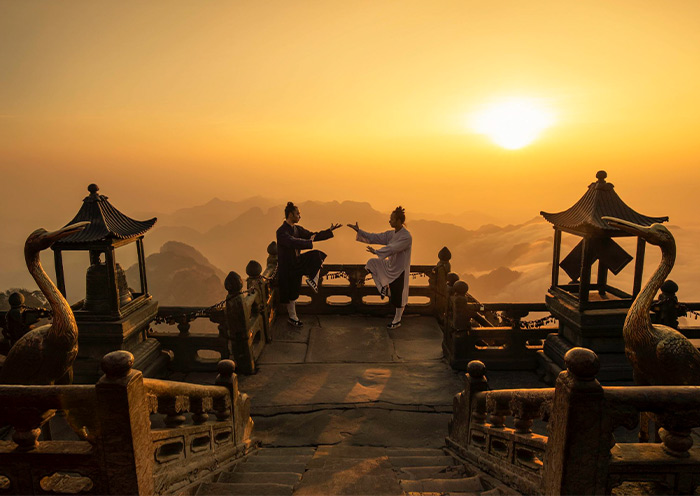
Wudang Mountain stands as one of the four great mountains of Taoism in China, a place where the ancient rhythms of Taoist culture resonate amidst the serenity of nature. Residing in Hubei Province, this cultural gem is etched with the legacy of martial arts mythology and spiritual sanctity.
Positioned about 400 kilometers from Wuhan and roughly 500 kilometers from Xi'an, Wudang Mountain is easy to get by high-speed train. The mountain is famed for its grand Taoist temples, such as the Nanyan Temple which clings to cliffs as if suspended in the heavens, and the Purple Cloud Temple, a hub of Taoist learning.
Explore China from Whole New Perspectives with AOT
Asia Odyssey Travel is your gateway to China. We're headquartered in China, with local teams in major cities. Our mission? To provide the best service and authentic travel experiences for explorers like you.
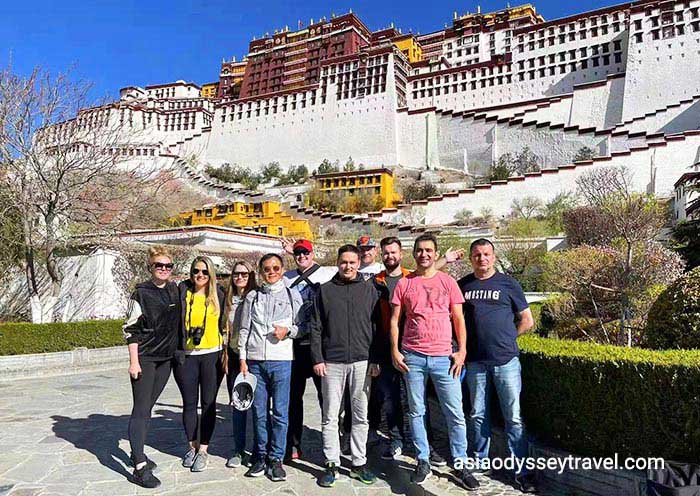

AOT offers a range of Tailor-Made Trips, City Trips, Nature Tours, Bike Tours, Trekking Tours, Family Tours, and Lhasa Luxury Tours with professional local team and on-spot service all the way. We cover all the top places in China, including Beijing, Shanghai, Tibet, Hong Kong, etc..
Explore China from whole new perspectives with Asia Odyssey Travel. Brace yourself for the ultimate holiday adventure. Ready to start your Grand China Tour? Contact us now!

